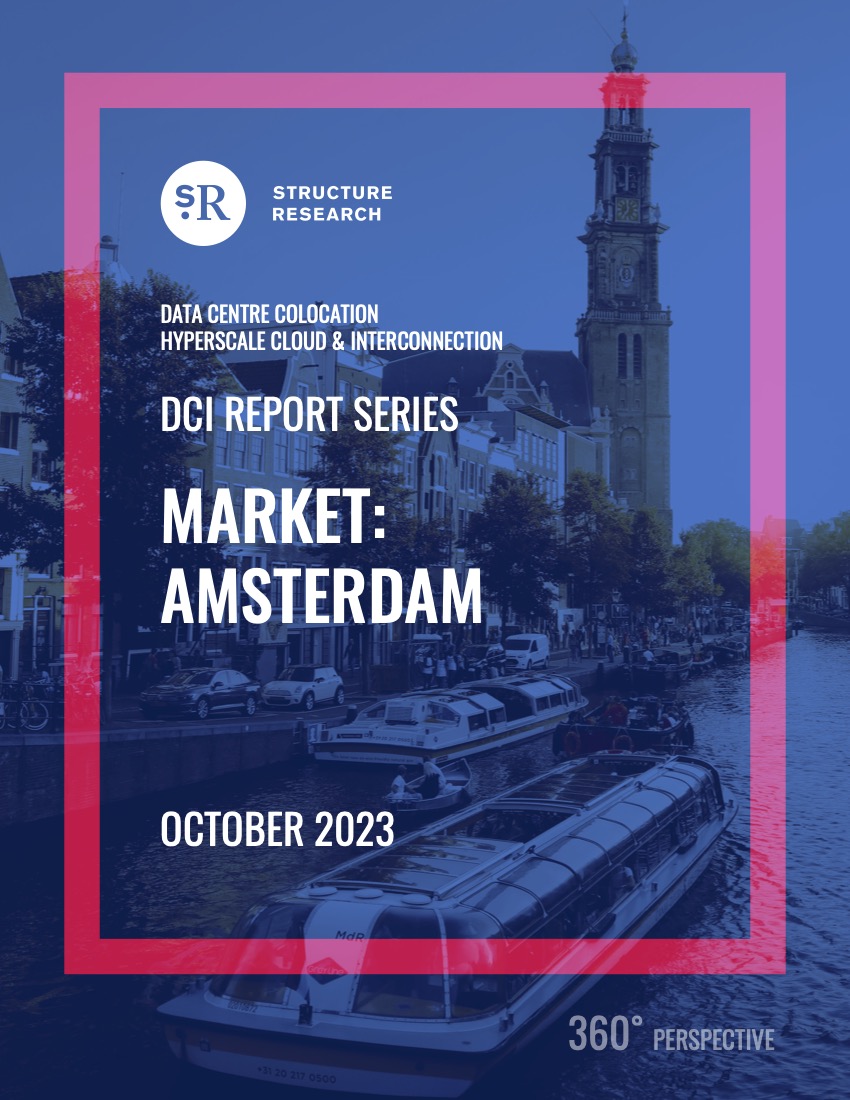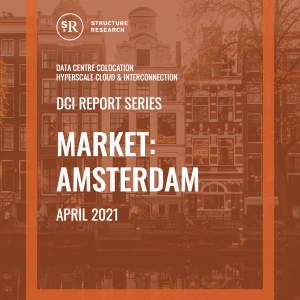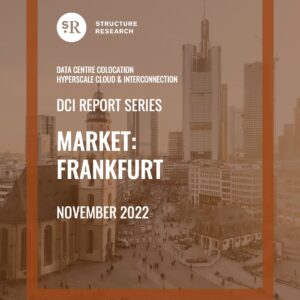Description
Amsterdam in the Netherlands is one of the top four data centre markets in Europe — colloquially known as FLAP (Frankfurt, London, Amsterdam and Paris) — and has experienced a steady growth trajectory for most of its history. Times have changed and Amsterdam is now the smallest of the FLAP markets, dropping behind Paris in terms of built-out critical MW capacity online in 2023.
Amsterdam rose to prominence as a top data centre destination and connectivity hub in Europe due to the central geographic location, terrestrial and subsea cable connectivity into most major cities in western Europe, and the Amsterdam Internet Exchange (AMS-IX), still one of the biggest IXs in the world. Amsterdam has long-time roots as a connectivity hub and the market is still dominated by retail colocation, with roughly a 60/40 split in favour of retail. This will get closer to a 50/50 split by 2026 as hyperscale deployments pick up and enterprise requirements grow in size.
Amsterdam has experienced a challenging few years, with regulatory constraints compounded by power transmission issues. Government moratoriums on new data centre builds, a complex permitting process and lack of hyperscale demand have contributed to a slower growth environment compared to many other markets in Europe. The level of hyperscale demand is lower than in other European markets given the amount of self-builds undertaken by Microsoft and Google (both outside Amsterdam) and the fact AWS is unlikely to open a full cloud infrastructure region. It was an early hyperscale cloud market when Microsoft came online in 2010 but failed to capitalise on the early promise. Only Google Cloud, Oracle Cloud and French webscaler Scaleway have Amsterdam regions alongside Azure.
The challenges are expected to persist. Even coming out of the moratorium, a lack of visibility about future power availability and regulations surrounding the build and operation of data centres, may have dissuaded potential customers, especially those that need to know they can scale in a market. As a result, there have been few new builds in recent years, although operators have incrementally expanded existing buildings through additions and re-purposing of space and power densification projects. Clarity on regulations and new power coming to market have prompted multiple operators (most already present in the market) to plan substantial new builds. Some of this is on land that had been banked before the moratorium, and some is dependent on the new substation coming to Schiphol-Rijk in 2024-26. As power becomes increasingly strained, especially in Schiphol-Rijk, hyperscalers may need to be more flexible in the AZ architectures. There is also still a lot of public backlash against data centres in the Netherlands generally, and Amsterdam in particular.
Growth will remain more moderate than in many other European markets. Despite the challenges, the Amsterdam colocation market is still projected to be worth €1.6b by the end of 2023 and to grow at a 5-year CAGR of 14.9%. Built-out critical MW is roughly 470MW in 2023 and is expected to double by 2027.
This report is an excellent resource for any service provider, investor or enterprise end user looking to understand and project the data centre market in Amsterdam or find a service provider.
Read the 69-page PDF preview HERE






